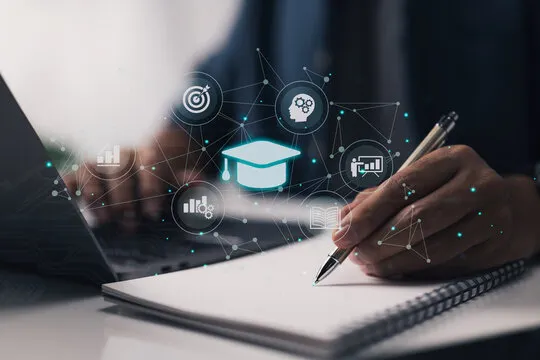The Rise of Online Learning
The world of education has seen a major transformation in recent years. Online learning, once considered an alternative method, has now become a primary mode of education for millions. But is this shift here to stay, or is it just a temporary fix? Let’s explore the rise of online learning, its advantages, challenges, and the future of education in a digital world.

The Growth of Online Learning
1. Pandemic’s Role in Online Education
- The COVID-19 pandemic forced schools and universities worldwide to adopt online learning.
- Institutions quickly adapted to virtual classrooms, video lectures, and digital assignments.
- Students and teachers had no choice but to embrace technology for uninterrupted learning.
2. Increasing Adoption by Schools and Universities
- Many top universities now offer full-degree programs online.
- Schools have started using hybrid models (a mix of online and in-person learning).
- Digital platforms like Coursera, Udemy, and Khan Academy are more popular than ever.
3. The Role of Technology in E-Learning
- Learning Management Systems (LMS) like Google Classroom and Moodle simplify digital education.
- AI-driven tutoring and chatbots provide instant academic support.
- Virtual Reality (VR) and Augmented Reality (AR) enhance interactive learning experiences.

Benefits of Online Learning
1. Flexibility and Convenience
- Students can learn at their own pace and schedule.
- Access to recorded lectures allows for better understanding.
- No need to commute, saving time and money.
2. Wider Access to Education
- Students from remote areas can now study from top institutions.
- People with disabilities find online learning more accessible.
- Lifelong learning is easier for working professionals and parents.
3. Cost-Effectiveness
- Online courses are often cheaper than traditional education.
- No expenses for commuting, housing, or campus facilities.
- Many free and affordable courses are available online.
4. Personalized Learning Experience
- Adaptive learning platforms adjust content based on student performance.
- AI and data analytics help educators track progress and offer personalized support.
- Students can choose from a wide range of courses and specializations.

Challenges of Online Learning
1. Lack of Face-to-Face Interaction
- Limited social interaction with teachers and classmates.
- Reduced engagement and motivation for some students.
- Difficulties in developing teamwork and communication skills.
2. Technical Issues and Digital Divide
- Not all students have access to high-speed internet or proper devices.
- Power outages and software problems disrupt learning.
- Digital illiteracy among students and teachers can slow progress.
3. Questionable Quality of Education
- Not all online courses maintain high standards.
- Some students struggle with self-discipline and time management.
- Risk of fraud and fake online degrees.
4. Increased Screen Time and Health Concerns
- Long hours in front of a screen cause eye strain and fatigue.
- Sedentary lifestyle leads to physical health problems.
- Increased mental stress due to lack of human interaction.

Future of Online Learning: A Permanent Shift?
1. The Rise of Hybrid Learning Models
- Many institutions are blending online and offline education.
- Virtual labs and AI-based simulations enhance practical learning.
- Flipped classrooms allow students to learn theory online and practice in person.
2. Government and Institutional Support
- Governments are investing in digital education infrastructure.
- Online learning policies are being implemented to ensure quality education.
- More universities are partnering with online learning platforms.
3. Corporate Influence on Education
- Companies are launching their own online courses and training programs.
- Industry-driven education is making students more job-ready.
- Remote work trends are increasing the need for digital learning.
Conclusion: Is Online Learning the Future?
The shift to online learning is not just a temporary fix—it is a fundamental change in education. While traditional classrooms will continue to exist, online learning will play an increasingly significant role. The future lies in a balanced approach, where technology enhances education without replacing the need for real-world interaction. As education evolves, students, teachers, and institutions must adapt to the new digital landscape.
The Student Loan Crisis: A Deep Dive into Causes, Impact, and Solutions





